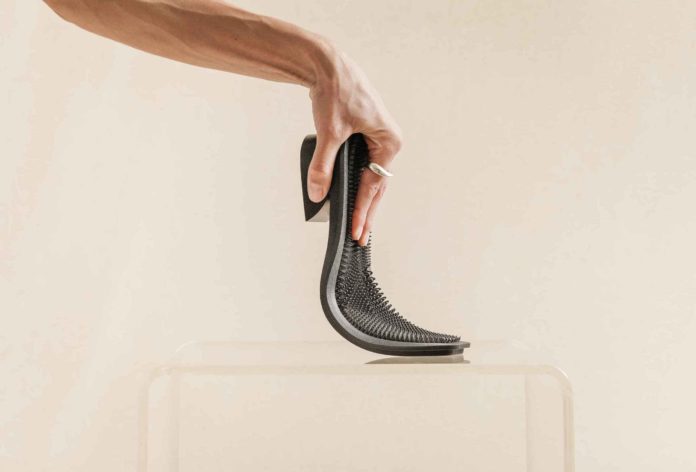Footwear brand HILOS has been working lately on its first environment evaluation of 3D printed shoes. While this is the second environment evaluation we read on a 3D printed consumer product, it should be noted that it is not the first conducted in the footwear industry.
If you listen to our Additive Talks sessions regularly, you may have already heard HILOS discuss the best practices to leverage AM in the consumer goods industry. For this report, the company has worked with experts from Yale University, materials producer BASF, and post-processing expert AMT to assess its 3D printed shoemaking technology as an alternative to traditional industrial shoemaking.
In traditional footwear manufacturing, annually, the global environmental footprint of the footwear industry adds up to a total of 249.1 billion kg CO2, of which the EU accounts for around10 billion kg CO2. To reduce these statistics and help the fashion industry meet its commitments to net-zero by 2030, HILOS’ analysis demonstrates that other technologies can be adopted to immediately lighten the industry’s footprint.
In footwear manufacturing that requires AM, the reports’ findings reveal a 48% reduction in carbon and a 99% reduction in water usage compared to legacy manufacturing, saving nearly 2,000 gallons of water and over 20 lbs (9Kg) of CO2e per pair.
Materials remain one of the most important items to assess
In general, factors relating to material selection account for up to half of the environmental footprint of a pair of shoes. Petroleum-based materials composing soles (PU, TPU, PVC, EVA, synthetic rubber) are the part that contributes most to the negative effects on the environment.
Taking example of their activity, HILOS first predicted that product recycling across its reverse supply chain would have a major impact on overall emissions. While circularity reduced carbon emissions by 7.25%, this was assuming a 100% product return rate. The actual impact would likely be much less. This is largely because of the energy required to reprocess material for a second life. If those recycling processes had been carbon-neutral, product circularity could reduce carbon emissions (in HILOS’ case) by up to 22%, the report reads.
This means that increasing the efficiency of material renewal is key to leveraging the full potential of product circularity.
Most importantly, and surprisingly, to reduce material waste, footwear brands must enhance product design. Indeed, a typical shoe can be made up of 65 discrete parts assembled in 360 steps while HILOS’ Emmett line is made from five parts assembled in 12 steps, the company notes.
Altogether, part and material reduction accounted for a 29% drop in carbon emissions. That combined with on-demand production, or only making products that would actually be sold, had the most dramatic impact on carbon reduction, jointly reducing carbon by 43%. The key takeaway: the right design and application of 3D printing are critical for overall carbon reduction, the report highlights.
While HILOS seems to bring encouraging feedback on a footwear manufacturing process that leverages AM, the company also warns that circularity is only one part of the equation. Even if everything we made today was 100% returned and recycled, manufacturing is still a wasteful and resource-intensive process. Brands overproduce. In apparel, this sometimes means making as much as 35% more than is needed. The industry can avoid creating and recycling shoes no one needs by only crafting on-demand after a customer makes a purchase.
You may access the 14-page report here.
Remember, you can post job opportunities in the AM Industry on 3D ADEPT Media free of charge or look for a job via our job board. Make sure to follow us on our social networks and subscribe to our weekly newsletter : Facebook, Twitter, LinkedIn & Instagram ! If you want to be featured in the next issue of our digital magazine or if you hear a story that needs to be heard, make sure you send it to contact@3dadept.com






